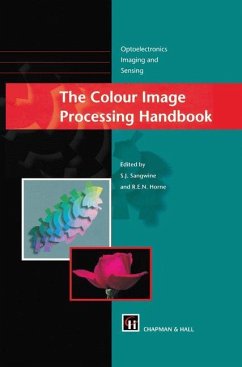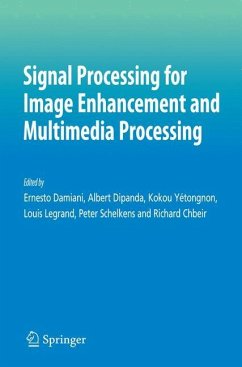
Informed Watermarking

PAYBACK Punkte
39 °P sammeln!
With a preface by Ton Kalker.
Informed Watermarking is an essential tool for both academic and professional researchers working in the areas of multimedia security, information embedding, and communication. Theory and practice are linked, particularly in the area of multi-user communication.
From the Preface: Watermarking has become a more mature discipline with proper foundation in both signal processing and information theory. We can truly say that we are in the era of "second generation" watermarking. This book is first in addressing watermarking problems in terms of second-generation insights. It provides a complete overview of the most important results on capacity and security. The Costa scheme, and in particular a simpler version of it, the Scalar Costa scheme, is studied in great detail. An important result of this book is that it is possible to approach the Shannon limit within a few decibels in a practical system. These results are verified on real-world data, not only the classical category of images, but also on chemical structure sets. Inspired by the work of Moulin and O'Sullivan, this book also addresses security aspects by studying AGWN attacks in terms of game theory.
"The authors of Informed Watermarking give a well-written exposé of how watermarking came of age, where we are now, and what to expect in the future. It is my expectation that this book will be a standard reference on second-generation watermarking for the years to come."
Ton Kalker, Technische Universiteit Eindhoven
Informed Watermarking is an essential tool for both academic and professional researchers working in the areas of multimedia security, information embedding, and communication. Theory and practice are linked, particularly in the area of multi-user communication.
From the Preface: Watermarking has become a more mature discipline with proper foundation in both signal processing and information theory. We can truly say that we are in the era of "second generation" watermarking. This book is first in addressing watermarking problems in terms of second-generation insights. It provides a complete overview of the most important results on capacity and security. The Costa scheme, and in particular a simpler version of it, the Scalar Costa scheme, is studied in great detail. An important result of this book is that it is possible to approach the Shannon limit within a few decibels in a practical system. These results are verified on real-world data, not only the classical category of images, but also on chemical structure sets. Inspired by the work of Moulin and O'Sullivan, this book also addresses security aspects by studying AGWN attacks in terms of game theory.
"The authors of Informed Watermarking give a well-written exposé of how watermarking came of age, where we are now, and what to expect in the future. It is my expectation that this book will be a standard reference on second-generation watermarking for the years to come."
Ton Kalker, Technische Universiteit Eindhoven
This book deals with digital watermarking, which is defined by the authors of this book as the art of hiding auxiliary information in digital data in a secure, robust and imperceptible fashion. Digital watermarking as a topic has a long history, but before 1995 publications in scientific literature were almost absent. From 1995 onwards however the number of publications on watermarking has been steadily increasing. Today a number of workshops and conferences on this topic exist; also a number of scientific journals on watermarking have been published. This renewed scientific interest in digital watermarking has led very quickly to industrial interest, as well. In 1996 the Copy Protection Technical Working Group, a voluntary consortium consisting of the movie industry, the IT industry and the consumer electronics industry, issued a call for watermarking technologies for the purpose of copy protection of DVD-Video. A few years later the Secure Digital Music Initiative issued a similar call, in this case focusing on copy protection of digital music. These two efforts have been only partially successful: copy protection based on digital watermarking is not (yet) implemented on a large scale in any type of consumer device. This current "failure" of watermarking, to live up to its expectations, finds its cause in a large number of reasons, ranging from legal considerations and system aspects to the relative immaturity of watermarking as a technology.












